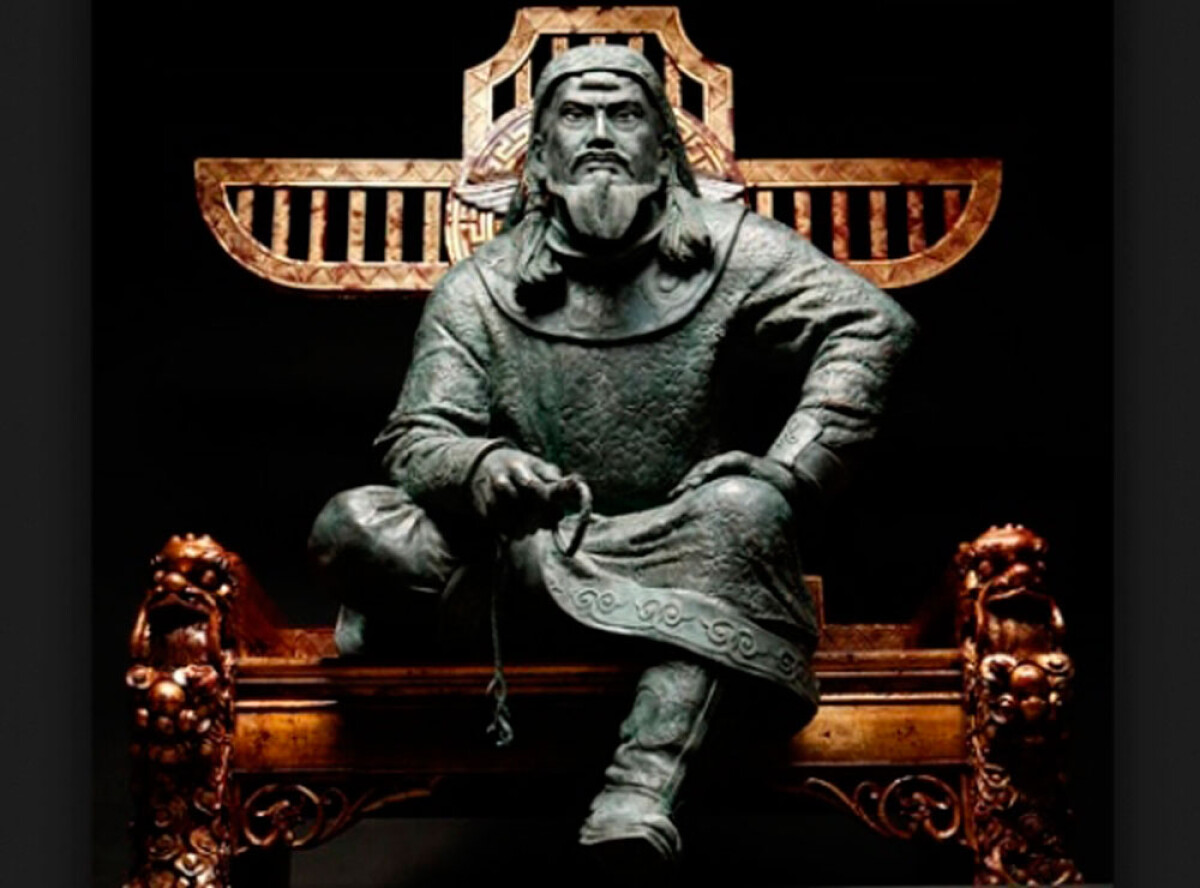
The fate of Ergune-kun tribes was inseparably linked with the history of Mongolia. The population growth led to the fact that by the mid-X century, formation of Darlekiin group of Mongols was completed. It is consisted of the following tribes: Nukuz, Uryankat, Kungirat, Ikiras, Ol-Kunut, Kuralas, Eljigin, Kunkulayut, Ortaut, Konkotan, Arulat, Kilingut, Kunjin, ushin, Suldus, Ildurkin, Bayaut, Iingit. They all had a common name Mongol and their common ancestor was Borte-Chino.
The proposed date (mid-X century) was derived as a result of analysis of Genghis Khan’s genealogy. It consists of two parts. The root and the trunk of the family tree form Genghis Khan’s ancestors from Chino tribe (Nukuz), the main one from Darlekins. The tribes originated from Chino and Nirun after the mid-X century, where Borjigin tribe took a leading place, formed a top of the family tree. Genghis Khan belonged to it. Niruns inherited the ancient name Mongol from Darlekins.
According to ‘The Chronicle Collection’, Borjigin tribe originated from one of Alan-goa’s son-Bodonchar. S.A.Kozin shared the same opinion: ‘Bodonchar was the progenitor of Borjigin generation’ (Коzin, 1941, § 42).
However, there is no word ‘ebuge’, which means ‘ancestor, forebear’ in the Mongolian original text. U.Erdenebat drew attention to this fact. He criticized the works by D.Gongor, which contributed to consolidation of mistaken view about Bodonchar as the founder of Borjigin tribe in scientific literature. Erdenebat proposed to re-consider approaches to solution of the issue on origin of this ethnic group. According to his opinion, Bodonchar should not be considered as the progenitor of Borjigins, but Genghis Khan’s earlier ancestor – Borchigiday-mergen. He also expressed the idea that Bodonchar was only a leader of Borjigin tribe being a descendant of Borchigid-mergen. This interpretation was accepted by L.Bilegt. He noted that specialists in Mongol studies did not pay attention to the suffix-tan in the word ‘oboqtan’, in his view, —tan, —tеn, —tоn suffixes give possessive meaning in Mongolian language: ‘morton’ – ‘horseman’ or ‘a person who has a horse’, ‘everten’ – ‘horned’ or ‘who has horns’. Thus, the meaning of the text will be in the following: ‘Bodonchar became the head of Borjigin’.
But it is necessary to keep in mind that –tan suffix has two different meanings in Mongolian language:
1)defines collective plurality, for example, ‘nagasatan’ – ‘uncles’ (by mother’s side);
2)defines the category of animals and people who possess what specified in the basis, for example, ‘ulaan malgaitan’ – ‘Red cappers’.
The examples given by Bilegt correspond to the second meaning of suffix –tan, whereas it has collective plural form in considered proposal. If we assume from the first meaning of suffix –tan, the sense of indivisible in the context of the phrase ‘Borjigin oboqtan’ will be ‘members of Borjigin tribe’ or ‘Borjigins’. Thus, a direct interpretation of the passage will be: ‘Bodonchar was one of the members of Borjigin tribe’. It says that Borjigin tribe originated before Bodonchar.
Returning to the name Borjigiday-mergen, it can be noted that in the past, Mongols called ‘mergen’ both a straight shooter and tribal leader, in this case, from Borjigin tribe. Analyzing the ancestor’s name of the Buryat tribe Khori Khoridoi-mergen, Ts.B.Tsydendambayev wrote that it was the name of ‘position’ of Khori leader. In this case, Khoridoi-mergen was a specific person, although he was not named anywhere by his name. During the period, when tribal leader of Khori was called Khoridoi-mergen, many Khoridoi-mergens replaced him on that ‘position’. As long as the name Khoridoi was a personified name of Khori tribe, the folk fantasy created the image of the mythical progenitor of Khori Buryat – Khoridoi-mergen apart from it.
The interpretation of the name Khoridoi-mergen, given by Ts.B.Tsydendambayev can be entirely related to the name Borjigidai-mergen. There is a hypothesis that the name Borjigin was used for the first time with regard to Esugei-bagatur, and the name Borjigiday-mergen was introduced in the Genghis Khan’s genealogy with the aim of archaization of Borjigin tribe. However, according to all sources, Borjigin tribe occurred earlier, not in the period when Esugey lived. During Esugey’s life, the name of the tribe was not just Borjigin, but Kiyat-Borjigin, according to Rashid-ad-Din. At that time, the part of Nirun tribes that was leading among the Mongols, tied closely to Khabul, received forgotten name Kiyat, which means ‘fearless, powerful’. The word Kiyat was added to the name of each subdivision included in Niruns.
The tribes Kiyat-Yurkin, Kiyat-Chanshiut, Kiyat-Yasar and Kiyat-Borjigin occurred. Genealogy of Genghis Khan consists of two parts: one includes his ancestors from Chino tribe, another one includes from Brojigin tribe. The lower part of genealogic tree, as upper one, started from the mythical Borjigiday-mergen, who was totemic, not real ancestor of Genghis Khan. Borte-Chino’s wife Khoai-Maral had totemic image.
